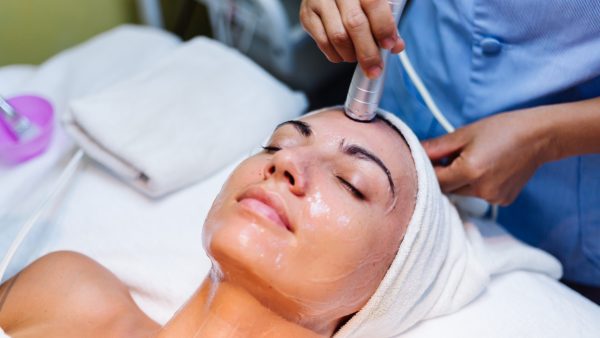Best Moisturizer After a Chemical Peel
If you’ve just undergone a chemical peel, you know the importance of post-care. Among the crucial steps is finding the best moisturizer after a chemical peel to support your skin’s healing process. A good moisturizer can soothe irritation, replenish moisture, and promote faster recovery.
Understanding Your Skin’s Needs
After a chemical peel, your skin is in a delicate state. It’s undergone a controlled injury to promote cell turnover and reveal fresher, smoother skin. During this time, your skin craves hydration and nourishment to aid in the healing process.
Key Ingredients to Look For
When selecting a moisturizer post-chemical peel, focus on gentle, hydrating ingredients. Look out for:
1. Hyaluronic Acid: This powerhouse ingredient attracts moisture to the skin, helping to keep it hydrated without feeling heavy or greasy.
2. Glycerin: Another humectant, glycerin helps to draw moisture into the skin and lock it in, keeping your skin hydrated for longer periods.
3. Ceramides: These lipid molecules help to strengthen the skin’s barrier, which may be compromised after a chemical peel. They aid in retaining moisture and protecting the skin from environmental stressors.
3. Aloe Vera: Known for its soothing properties, aloe vera can help calm irritated skin and reduce redness, making it an excellent choice for post-peel care.
4. Vitamin E: As an antioxidant, vitamin E can help protect the skin from free radical damage and promote healing.
Avoiding Irritating Ingredients
While your skin is in the healing phase after a chemical peel, it’s essential to steer clear of potentially irritating ingredients. Avoid moisturizers containing:
1. Fragrance: Fragrances can be sensitizing, especially on freshly peeled skin. Opt for fragrance-free formulas to reduce the risk of irritation.
2. Alcohol: Alcohol-based products can be drying and may further irritate your skin. Look for moisturizers with minimal alcohol content or none at all.
3. Exfoliating Agents: Scrubs or exfoliating ingredients like alpha-hydroxy acids (AHAs) or retinol should be avoided until your skin has fully healed from the peel.
Application Tips
When applying moisturizer post-chemical peel, follow these tips for optimal results:
1. Gently Pat, Don’t Rub: Your skin is delicate after a peel, so be gentle when applying moisturizer. Pat it onto your skin instead of rubbing to avoid unnecessary friction.
2. Wait for Absorption: Allow the moisturizer to fully absorb into your skin before applying any other products. This gives your skin time to drink up the hydration it needs.
3. Apply Sunscreen: After moisturizing, don’t forget to apply a broad-spectrum sunscreen with SPF 30 or higher. Your skin is more susceptible to sun damage after a peel, so sun protection is non-negotiable.
Top Moisturizers After a Chemical Peel
1. CeraVe Moisturizing Cream: This dermatologist-recommended cream is enriched with hyaluronic acid and ceramides to provide long-lasting hydration and support the skin’s natural barrier. It’s fragrance-free, non-comedogenic, and suitable for all skin types, making it an excellent choice for post-peel care.
2. La Roche-Posay Toleriane Double Repair Face Moisturizer: Formulated with prebiotic thermal water, niacinamide, and ceramides, this moisturizer helps to restore the skin’s moisture barrier and soothe irritation. It’s oil-free, non-comedogenic, and gentle enough for sensitive skin, making it ideal for use after a chemical peel.
3. Neutrogena Hydro Boost Water Gel: This lightweight gel moisturizer is packed with hyaluronic acid, which instantly quenches thirsty skin and locks in moisture for up to 48 hours. Its oil-free, non-comedogenic formula is suitable for all skin types, including oily and acne-prone skin, making it a great option for post-peel hydration.
4. Aveeno Ultra-Calming Daily Moisturizer: Infused with feverfew extract, this gentle moisturizer helps to calm and soothe sensitive skin while providing long-lasting hydration. Its fragrance-free, non-comedogenic formula makes it suitable for all skin types, including those prone to redness and irritation after a chemical peel.
5. Paula’s Choice Skin Recovery Replenishing Moisturizer: Designed specifically for dry, sensitive skin, this rich cream contains antioxidants, ceramides, and plant oils to nourish and hydrate the skin while reducing redness and inflammation. It’s fragrance-free, non-irritating, and perfect for post-peel recovery.
Conclusion
Choosing the right moisturizer after a chemical peel is crucial for supporting your skin’s healing process and maintaining its health. Look for gentle, hydrating ingredients while avoiding irritants, and always remember to apply sunscreen during the day. By following these tips, you can ensure your skin stays moisturized, soothed, and glowing post-peel.


Leave a Reply